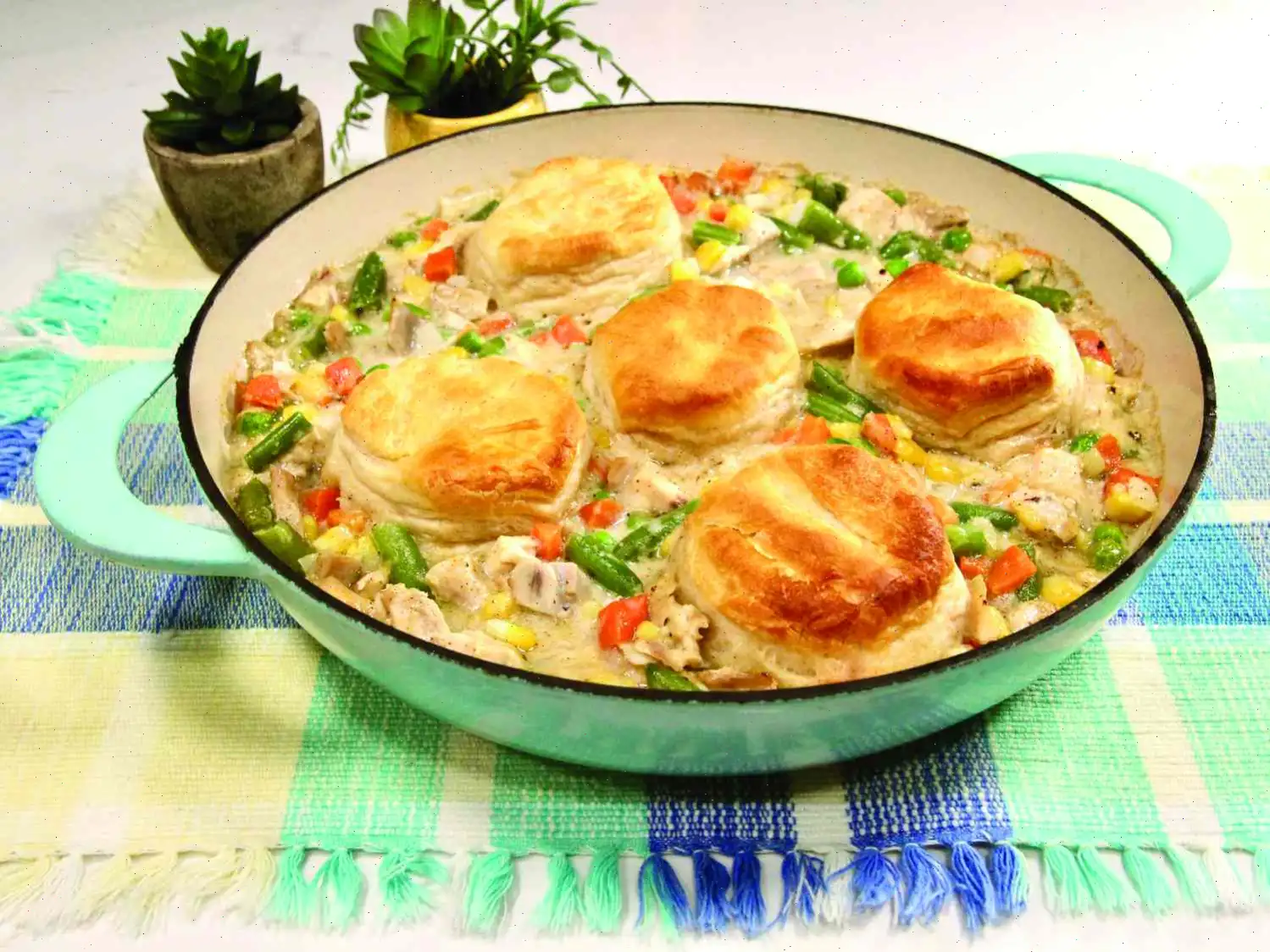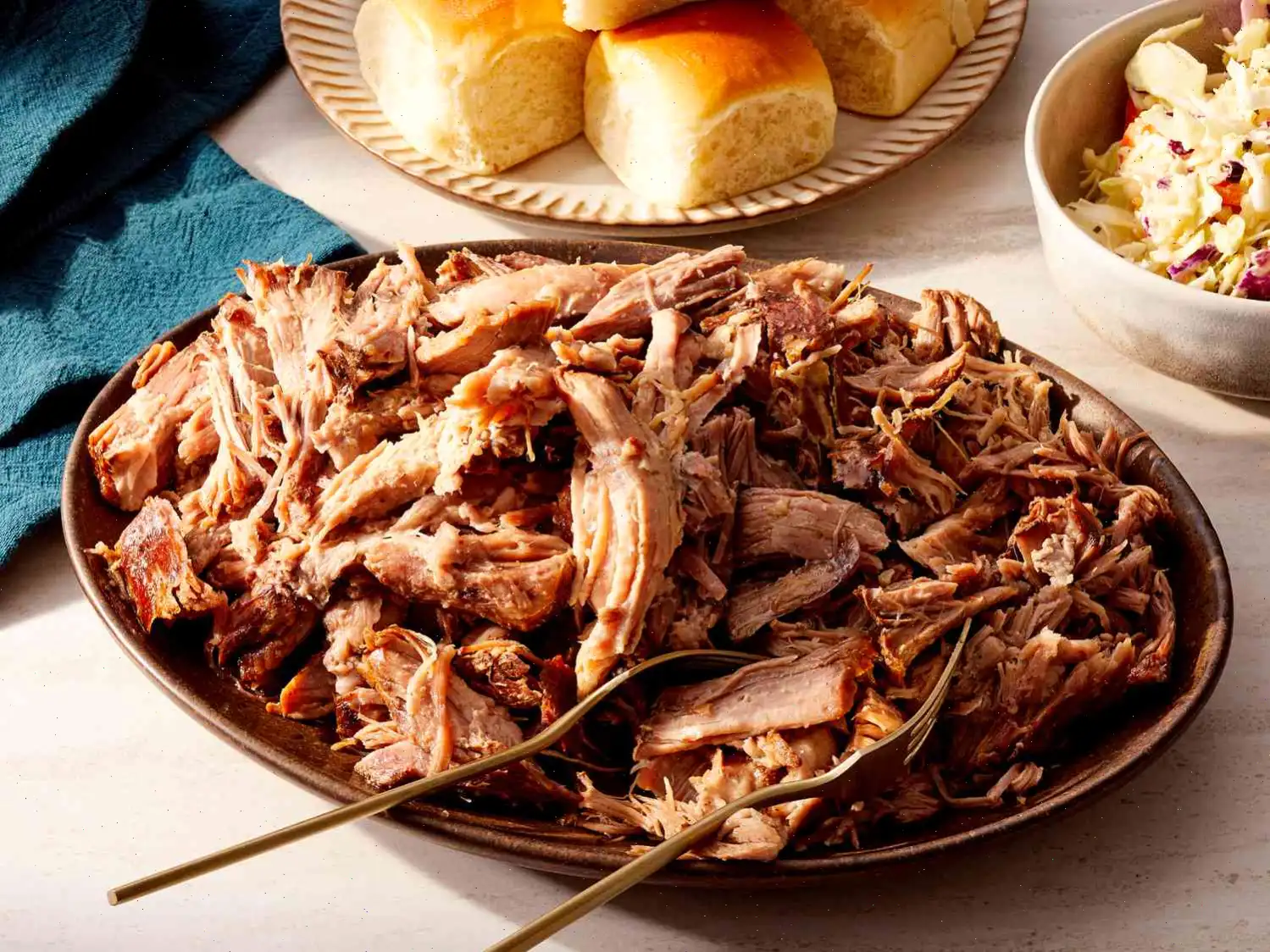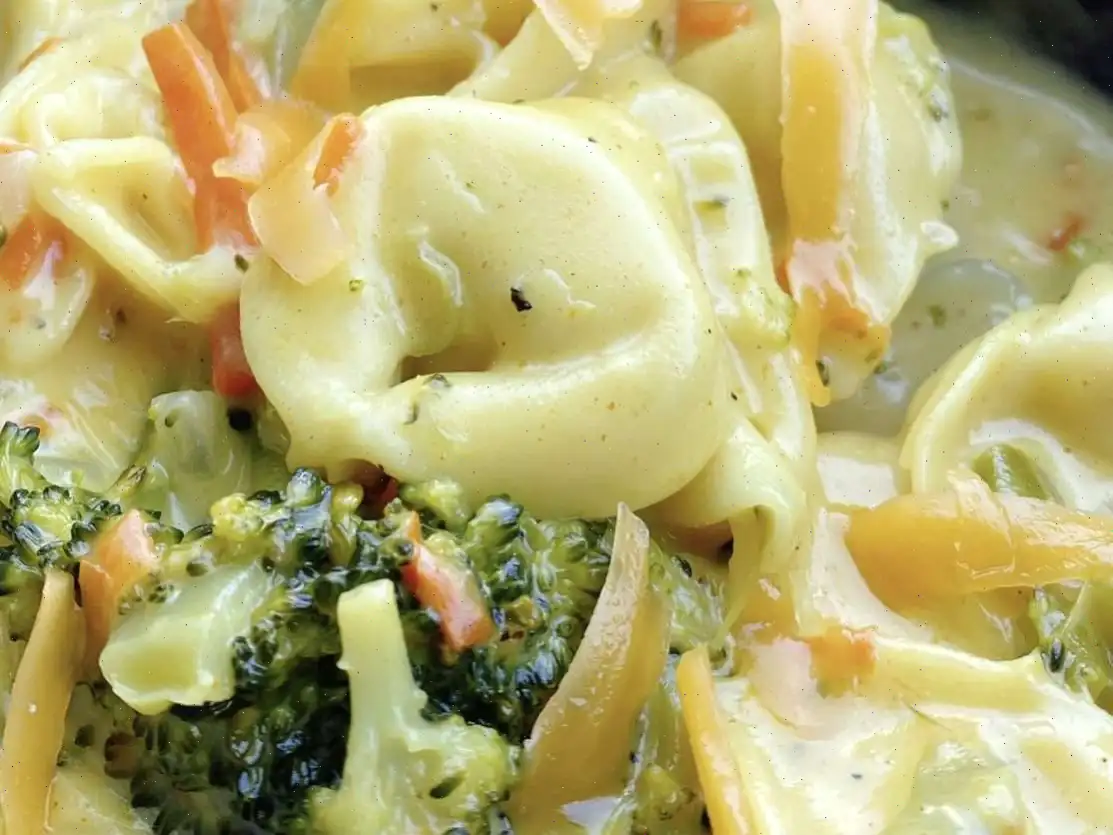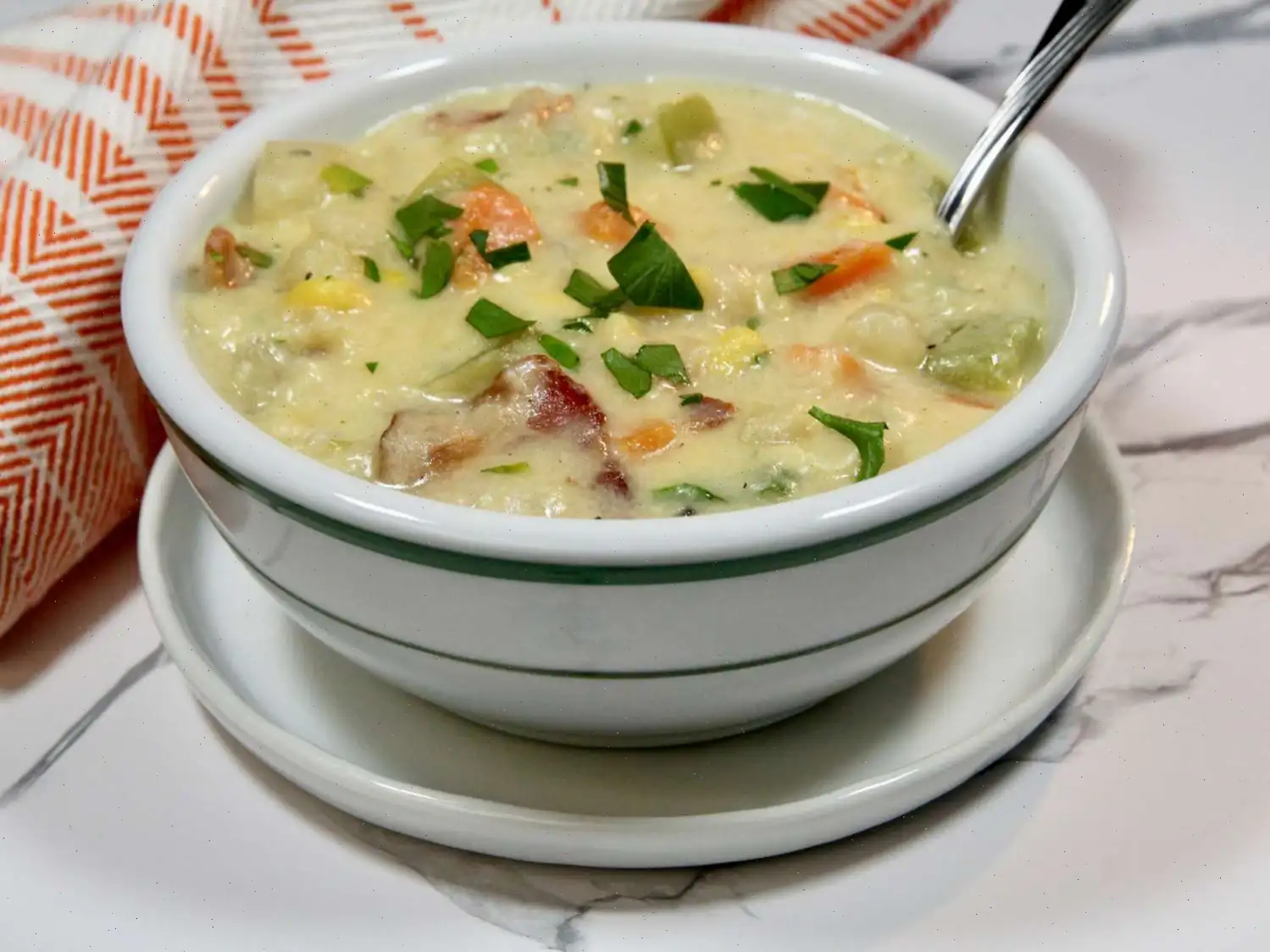
Lumpia (Shanghai version) Recipe
Ingredients
- 1 pound ground pork
- 1 pound ground beef
- 1 medium onion, finely chopped
- 1 carrot, grated
- cup soy sauce
- 2 tablespoons salt
- 1 tablespoons garlic powder
- 2 teaspoons black pepper
- 1 (16 ounce) package spring roll wrappers
- cup water, or as needed
- 1 quarts oil for frying
Directions
- In a large bowl, combine ground pork, ground beef, onion, and grated carrot. Mix everything together thoroughly using your hands.
- Slowly add soy sauce, salt, garlic powder, and black pepper to the mixture. Continue mixing until all ingredients are fully incorporated.
- Prepare the spring roll wrappers by laying one flat on a clean surface, with one corner facing you. Place approximately 2 tablespoons of the filling in a line across the center of the wrapper, no thicker than your thumb.
- Moisten the edges of the wrapper with a little water to help seal it.
- Fold the bottom edge of the wrapper over the filling, then fold in the left and right sides toward the center. Roll the wrapper tightly to enclose the filling.
- Heat the oil in a deep fryer or a large, heavy skillet to 375F (190C).
- Fry the lumpia in batches, turning occasionally, until they are golden brown, which should take about 3 to 4 minutes per batch.
- Once fried, drain the lumpia on a paper towel-lined plate.
- Serve the lumpia as-is or cut in half. Optionally, you can pair them with a dipping sauce of your choice.
Editor's Note
The nutritional value for the oil used in frying has been calculated based on a 10% retention rate after cooking. This can vary depending on cook time, temperature, and the type of oil used.
Nutrition Facts (per serving)
| Nutrition | Amount | % Daily Value |
|---|---|---|
| Calories | 262 | |
| Total Fat | 18g | 23% |
| Saturated Fat | 5g | 26% |
| Cholesterol | 38mg | 13% |
| Sodium | 1037mg | 45% |
| Total Carbohydrates | 15g | 5% |
| Dietary Fiber | 1g | 3% |
| Total Sugars | 1g | |
| Protein | 10g | 20% |
| Vitamin C | 1mg | 1% |
| Calcium | 21mg | 2% |
| Iron | 2mg | 8% |
| Potassium | 170mg | 4% |
* Percent Daily Values are based on a 2,000 calorie diet. Your daily values may be higher or lower depending on your calorie needs.

History and Origin
Lumpia is a popular Filipino dish that shares roots with Chinese spring rolls, reflecting the country's rich history of trade and cultural exchange. The Shanghai version of lumpia is a Filipino variation of the Chinese spring roll, which was brought to the Philippines by Chinese immigrants. Unlike the larger, more vegetable-heavy Chinese spring rolls, Lumpia Shanghai is typically filled with a mixture of seasoned ground meat, often pork and beef, making it a heartier snack or appetizer. Its deep-frying technique ensures a crispy and flavorful treat that's beloved across the Philippines and beyond.
Regional Variations and Local Touches
While Lumpia Shanghai is a favorite throughout the Philippines, there are regional variations in its preparation. In some areas, Lumpia Shanghai is made with a combination of pork, beef, and even shrimp, depending on local preferences and the availability of ingredients. Some variations incorporate vegetables like carrots and onions for added crunch and flavor. The wrappers used are typically thinner and more delicate than those of the larger lumpia varieties, contributing to the crisp texture when fried. These regional variations highlight the versatility of Lumpia Shanghai, which can be adjusted to suit local tastes and traditions.
What Sets Lumpia Shanghai Apart
What distinguishes Lumpia Shanghai from other similar dishes is its size and its filling. Unlike the larger, vegetable-packed Filipino lumpia, Lumpia Shanghai is made with a finely minced meat filling, often complemented by soy sauce, garlic, and pepper. The filling is seasoned just enough to bring out the rich flavors of the meat without overpowering the delicate crispiness of the wrapper. It is smaller in size, which makes it ideal for appetizers, finger foods, or party snacks. Its thin wrapper and meaty filling are what make Lumpia Shanghai distinct from other types of spring rolls found in various Asian cuisines.
Where is Lumpia Shanghai Typically Served?
Lumpia Shanghai is commonly served at Filipino parties, family gatherings, and celebrations, such as birthdays, Christmas, and other special occasions. It is often seen at buffets and is enjoyed as an appetizer or snack. In the Philippines, Lumpia Shanghai is sometimes served with a sweet and sour dipping sauce or vinegar, providing a delightful balance to its savory filling. Outside of the Philippines, this beloved dish can often be found in Filipino restaurants and eateries that serve traditional Filipino cuisine, particularly in areas with large Filipino communities.
Interesting Facts about Lumpia Shanghai
- Lumpia Shanghai is considered one of the most popular Filipino appetizers, often served alongside other traditional dishes like adobo and pancit.
- The term "Lumpia" itself is derived from the Chinese word "lunpia," meaning spring roll, and its popularity in the Philippines dates back to the 17th century, during the Ming dynasty.
- Filipino families often make large batches of Lumpia Shanghai, frying some and freezing the rest for later. This makes it a convenient snack for unexpected guests.
- Though it is traditionally deep-fried, Lumpia Shanghai can also be baked for a healthier version, without sacrificing the signature crispiness.
- In some Filipino homes, Lumpia Shanghai is often enjoyed with a side of Thai sweet chili sauce, adding a hint of spice and sweetness to the dish.
You can listen to this recipe in AI audio format. Simply click the play button below to listen to the content in a format that suits you best. It’s a great way to absorb information on the go!
FAQ about Lumpia (Shanghai version) Recipe
Comments
John Adams
12/31/2023 02:09:46 AM
This recipe is fantastic! I recommend skipping the extra salt since soy sauce already contains plenty of sodium. For a stronger garlic flavor, opt for fresh crushed garlic instead of powdered. I prefer using ground beef over pork as it cooks quicker, ensuring that the lumpia wrappers don't burn while waiting for the meat to cook through. Adding sesame oil gives it a unique twist, and I use an Asian-style sesame oil for its robust aroma and flavor. Another secret ingredient is adding an egg to the mixture. These lumpia are delicious with sweet and sour sauce, soy sauce with a touch of vinegar, or Thai sweet chili sauce for a hint of spice. They also freeze well, making them perfect for unexpected guests. When frying from frozen, be cautious of oil splatter by controlling the heat. To adjust the seasoning, taste a small portion of the meat before cooking the entire batch. Spray the storage bag or container with baking spray when freezing for easy removal.
Stephanie Rivera
05/22/2025 09:54:01 AM
Yummy! This reminded me of my Mom's recipe, but with a twist. I replaced the carrots, beef, and regular onions with black fungus, also known as "Taingang daga" in Tagalog (which hilariously translates to "rat ears"!) for a unique flavor and texture. I used ground pork and green onions instead, keeping it simple yet delicious. Remember to chop or grate the black fungus finely and use it sparingly to enhance the pork's flavor. For 1lb of meat, I used 1 tablespoon of chopped black fungus and green onions instead of regular onions. Enjoy!
Joshua Hall
02/28/2025 05:39:17 PM
I have been making lumpia for years now and have experimented with different fillings such as all pork, all ground beef, and even all ground turkey. In terms of taste, the pork-filled lumpia ranks first, with the ground turkey version coming in second. One important tip is to always check the lumpia wrappers for mold before purchasing them at the grocery store. I've learned from experience that the wrappers should either be used immediately or frozen upon getting home to prevent them from molding easily. It's crucial to only put a small amount of filling in each wrapper, as they cook quickly and need to be thoroughly cooked. To save time, I sometimes use store-bought shredded carrot and cabbage coleslaw mix with half a medium onion for the vegetable filling. Don't forget to separate all the wrappers before starting to roll them, and keep them covered with a dry dishcloth to prevent drying out. I find it efficient to create an assembly line using about 7 wrappers at a time, quickly stuffing, rolling, and sealing them. Sweet Chili Sauce is a must-have for dipping, usually located next to sweet and sour sauce in most grocery stores. Both the wrappers and sauce can be found in the frozen section or an international grocery store. You can cook some lumpia now and freeze the rest for later enjoyment.
Cynthia Rivera
08/02/2023 02:52:56 PM
Great recipe! I rated it 4 stars because I found the salt content a bit high for my taste, but it was still delicious. Don't forget to include green onions for added flavor. A helpful tip is to use a ziploc bag with a corner snipped off to easily squeeze out the mixture, saving you time and mess. For better sealing of the wrappers, make sure to wet them with water as you wrap them up.
Helen Mitchell
12/21/2024 06:37:38 AM
This recipe is reminiscent of my mom's authentic Filipino lumpia, bringing back nostalgic flavors of my childhood. I will certainly be making it again, perhaps with a touch less salt. For added crunch and flavor, I included 2-3 green onions and a can of chopped water chestnuts. Remember, the key to perfect lumpia is using the right wrappers – those super thin ones. If you can, I recommend checking out Ranch 99 for the best selection.
Barbara White
07/10/2024 01:23:10 PM
I love making this recipe regularly and I never add extra salt - it's simply not necessary! I prefer using lumpia wrappers that I purchase from an Asian supermarket. Delicious!








